At a Glance
- Keep Customer Commitments: Strengthen fulfilment and delivery systems to consistently meet what was promised — on time, in full, every time.
- Improve Order Execution: Enhance accuracy, product availability, and lead time transparency to reduce costly order errors and missed expectations.
- Build Supply Confidence: Embed resilience in fulfilment to build customer trust and avoid lost revenue from stockouts, delays or miscommunication.
Introduction
This article is the last in a six-part series titled “Thrive Through Turbulence,” focused on how businesses can stay competitive and resilient in today’s volatile operating environment.
In times of disruption, customers grow less tolerant of poor service. One missed delivery, one inaccurate order, one broken promise — and trust begins to erode. In many industries, even small fulfilment failures now cost more than ever: lost sales, lost customers, and reputational damage that’s hard to reverse.
To sustain performance and customer trust, leaders must focus not just on selling — but on reliably delivering. This is where supply chain resilience meets revenue protection. Below are five key moves leaders can act on today.
1. Fulfilment Reliability
Customers don’t just want what they ordered — they want it reliably, and without excuses. But many organisations suffer from inconsistent execution due to poor coordination across departments, supplier shortfalls, or reactive processes.
What You Can Do:
- Align Planning and Fulfilment: Synchronise sales, inventory, and operations planning (SIOP) to align demand with real-world fulfilment capabilities.
- Buffer Strategically: Use safety stocks or flexible capacity in critical areas to reduce the risk of missed commitments.
- Strengthen Internal Handoffs: Remove friction between departments (e.g. sales to warehousing) to avoid internal delays that disrupt fulfilment.
What It Unlocks:
Customers get what they were promised, when they expect it — boosting satisfaction and reducing revenue leakage from service failures or cancellations.
Example:
One of India’s largest food manufacturers and distributors wanted to improve order fulfillment, implementing systems in sales, distribution, and planning. They partnered with Renoir to convert production planning to a data-driven system based on daily demand from super-stockists to improve order fill rates. This resulted in a direct alignment of planning and fulfilment capabilities, resulting in a 60% improvement in order fulfilment. Read the case study.
2. On-Time/In-Full (OTIF) Delivery
Being on time and complete isn’t just a metric — it’s a promise. Poor OTIF erodes customer trust and often signals broader performance issues across supply chain and logistics.
What You Can Do:
- Track OTIF Drivers: Break down late or incomplete orders by root cause — system issues, supplier delays, process bottlenecks — and act with urgency.
- Implement Tiered Monitoring: Use dashboards to track OTIF performance daily at multiple levels — region, warehouse, supplier — and escalate issues fast.
- Enable Proactive Logistics: Integrate predictive tools to flag potential disruptions and enable real-time rerouting or replanning.
What It Unlocks:
Higher OTIF builds customer confidence and directly reduces the risk of lost future revenue due to delivery failure. It also improves internal accountability and transparency.
Example:
A Southeast Asian Logistics market leader tasked Renoir to improve existing delivery systems and processes. This was achieved through redesigned in-hub processes and clearer roles and responsibilities. Setting up a pre-delivery team to fast-track sorting also contributed to this improvement. The installation of KPIs like fulfillment rate allowed for timely management of performance. This resulted in a significant improvement in on-time delivery performance, reaching 94% against a baseline of 80%. Read the case study.
3. Product Availability
If it’s not on the shelf or in the warehouse, it’s not in the customer’s cart. Out-of-stocks frustrate buyers, cause churn, and damage brand loyalty — especially when competitors can fill the gap.
What You Can Do:
- Improve Forecast Accuracy: Use demand sensing, real-time sales data, and external signals to sharpen short- and long-term forecasting.
- Segment Inventory Strategies: Apply differentiated service levels — fast movers get higher availability; slow movers get leaner buffers.
- Strengthen Supplier Reliability: Actively manage supplier performance with clear metrics and joint recovery plans to keep critical items flowing.
What It Unlocks:
Higher availability means fewer lost sales, stronger brand trust, and more reliable revenue. It also improves capital efficiency by reducing unnecessary inventory build-up.
Example:
Renoir collaborated with a major Chinese Pharmaceutical company with inefficient production planning. They took action by implementing management and staff training and an activity-based costing system to enhance reporting transparency. As a result of these efforts, they achieved a significant improvement in the timeliness of procurement from 64% to 100% and in supplier delivery timeliness from 65% to 99%. These improvements directly contributed to better product availability by ensuring timely supply of materials. Read the case study.
4. Lead Time Transparency
Surprises kill trust. When customers don’t know what to expect — or worse, are promised one thing and receive another — confidence collapses. Transparency builds credibility.
What You Can Do:
- Set Realistic Promises: Base lead time commitments on validated supply chain data, not best-case scenarios or unverified assumptions.
- Automate Customer Updates: Push real-time delivery status updates to customers through digital channels — email, SMS, or portals.
- Make Delays Visible Internally: Escalate delays quickly across planning, sourcing, and logistics teams to re-align customer expectations.
What It Unlocks:
Fewer customer complaints, higher satisfaction, and improved ability to recover from inevitable delays — without damaging relationships.
Example:
A major Aluminum manufacturer experienced limited visibility on customer order fulfillment actual date versus commitment. Renoir assisted them by implementing system elements for order planning & scheduling, dispatch planning, and order pipeline management. Furthermore, the entire process from sales order to dispatch was transformed into a sales inventory and operations planning ecosystem. This improved system, backed by robust review mechanisms managing elements from raw materials to sequencing, resulted in throughput (23%), plant availability (20%) and improved OTIF levels, directly enhancing lead time transparency for customer orders. Read the case study.
5. Order Accuracy
The fastest delivery in the world is worthless if it’s the wrong product, quantity, or spec. Order errors trigger returns, rework, and customer churn — all of which quietly erode profit.
What You Can Do:
- Automate Order Entry: Replace manual data entry with integrated systems to reduce human error and duplication.
- Validate Before Dispatch: Use barcoding, scan checks, and reconciliation tools at dispatch to catch and correct errors before delivery.
- Analyse Error Patterns: Review return and complaint data regularly to find systemic issues and retrain or redesign processes.
What It Unlocks:
Fewer returns, lower handling costs, and a smoother experience for customers — improving both operational margins and long-term loyalty.
Conclusion: Deliver on Promises to Protect Revenue and Trust
Performance is a key battleground. Customers demand fast, accurate, and visible fulfilment — and they’ll take their business elsewhere if you can’t deliver.
This isn’t just a logistics challenge. It’s a strategic imperative to protect your revenue, reputation, and repeat business.
From fulfilment reliability to OTIF, from product availability to order accuracy — every improvement strengthens your promise to the market. Done right, performance becomes a competitive advantage.
Renoir Consulting has helped businesses build delivery systems that scale with reliability, not chaos. Let’s work together to assess your fulfilment gaps, rebuild customer confidence, and make performance your growth engine.









